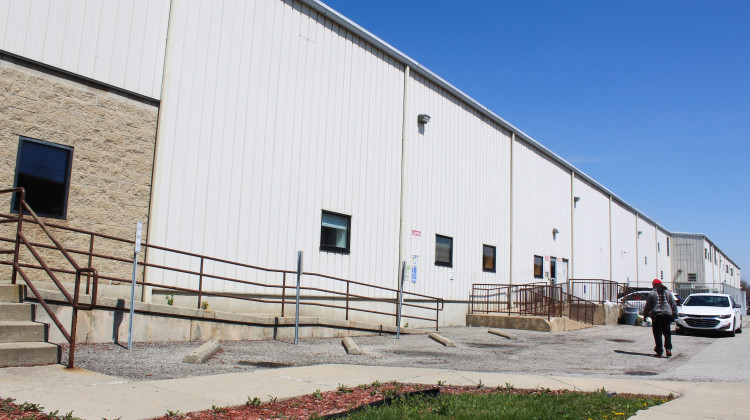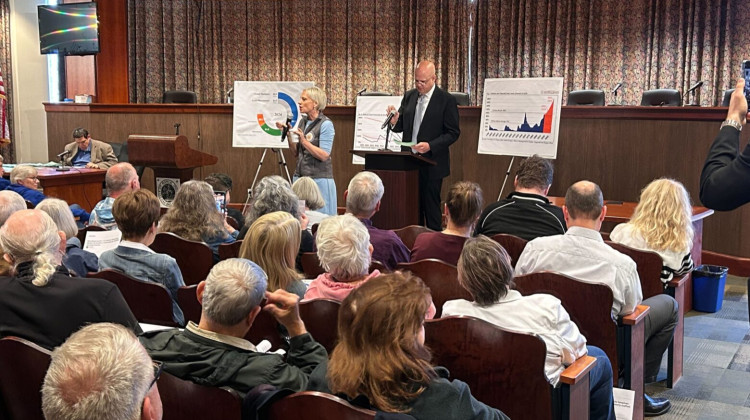Lead contamination has been making headlines lately: in East Chicago, Indiana, or South Bend or Bloomington. Many towns across Indiana are grappling with lead contamination, and dozens have aging, lead-based water infrastructure.
But how does a town know if it has a lead problem?
David Konisky, a professor of public and environmental affairs at Indiana University, says there’s not one single process.
“Sometimes they’re brought to attention by citizens, who happen to know something about the history of the site,” Konisky says. “Often times when land is being considered for redevelopment or transfer, things emerge in that context. Sometimes the EPA may come across information.”
He says it’s pretty haphazard.
South Bend is currently dealing with elevated blood lead levels in children. André Gingerich Stoner, a community organizer, says the problem is concentrated in the city’s Near Northwest neighborhood.
“It includes census tract 6, which is an area that has one the highest levels of, percentages of blood contamination of children with lead in South Bend, and actually in the state,” Stoner says.
Of the children tested in the census tract, nearly 30 percent have elevated blood lead levels. The statewide average in 2015 was just 4 percent.
Officials say the source is homes with lead-based paint. But lead-based paint is everywhere, a lot of homes built before 1978 have it.
So why the high percentage of South Bend children? No one knows, although a group at the University of Notre Dame is investigating. And the problem only came to light when the Indiana State Department of Health broke down blood lead data by census tract in a new program. But knowing is only half the battle.
“One of the challenges is that, as we’re digging into this, we’re discovering that funding has diminished, testing has diminished, the attention to this problem has diminished,” says Stoner.
As far as funding goes, the St. Joseph County Health Department doesn’t have the money to help all the children with elevated blood levels—help like seeing if there are lead hazards in the kids’ homes or educating parents on how to manage lead poisoning.
And that situation is not uncommon. East Chicago, Indiana, is dealing with lead contaminated soil in a residential neighborhood. It’s projected to spend $47 million responding to the crisis. And that doesn’t even count the charge to DuPont and Atlantic Richfield, the companies responsible for funding the cleanup: nearly $29 million.
East Chicago is also a good example of this “knowing” problem. Many towns miss opportunities to identify contamination problems: like in the 1970s, when a public housing complex was built on a former lead smelting plant, or in 1991, when the state health department found elevated blood lead levels in children.
The USS Lead site closed in 1985. Documents from the Environmental Protection Agency indicate the neighborhood to the north of the site wasn’t tested for lead contamination until 2003, and didn’t become a Superfund site until 2008.
And that brings us back to Konisky’s point — there’s no single process for identifying a lead problem or reporting lead contamination.
But even once you know about the problem and you’ve reported it, Konisky says you need something else: political will to allocate more money.
“While there is — I think everyone would like to clean up more properties,” Konisky says. "The resource constraints are real, and they’ve been a problem for a long time, this is not a new problem.”
The federal Superfund program has been short on money since the early 1990s. And state funding for the Indiana Department of Environmental Management has declined 25 percent since 2007.
Konisky says, generally speaking, when county, state and the federal governments are operating in a conservative fiscal environment — like right now — this is not likely to change.
On the other hand, there is currently a bipartisan effort in the state legislature to harness more resources for East Chicago and, to a lesser extent, South Bend. There’s two bills that recently passed the Senate which would set up a template for possible, future funding to improve water infrastructure.
 DONATE
DONATE






 View More Articles
View More Articles


 Support WFYI. We can't do it without you.
Support WFYI. We can't do it without you.